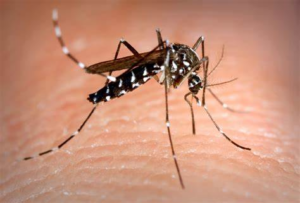Deadly diseases and infections with a 24-hour window
3 min read
Before modern medicine existed, many infectious diseases spread quickly and unapologetically, wiping out significant numbers of people in relatively short periods of time.
Even today, it is still possible to contract aggressive diseases and infections that can kill you within the short span of a day if left untreated. Browse through some of them in this gallery!

Meningococcal meningitis
The bacteria is often transferred through saliva and mucus and is fatal in about 50% of cases, according to Healthline. Symptoms include flu-like symptoms, a stiff neck, and confusion.
Meningitis targets the meninges (tissue covering the spinal cord and brain) and causes swelling that can lead to severe brain damage.
Infants and young children are extremely susceptible to the disease.
Sepsis
This condition refers to an infection that has spread through the bloodstream and into other areas of the body.
More specifically, sepsis develops when the immune system releases chemicals to combat the infection that end up causing inflammation throughout the body. Severe sepsis causes rapid organ failure and death.
It frequently occurs in hospitals where patients are recovering from a procedure and are susceptible to infections.
Stroke
During a stroke, blood supply to the brain is either interrupted or reduced, resulting in a lack of oxygen, brain swelling, and cell death.
Symptoms can include numbness or paralysis on one side of the body, garbled speech, dizziness, and confusion.
Stroke
During a stroke, blood supply to the brain is either interrupted or reduced, resulting in a lack of oxygen, brain swelling, and cell death.
Symptoms can include numbness or paralysis on one side of the body, garbled speech, dizziness, and confusion.
Bubonic plague
Also known as the Black Death, the plague is caused by the bacterium Yersinia pestis. In the mid-1300s, it wiped out approximately half of Europe’s population.
The disease infects small animals, such as rats, and is then transmitted to humans through fleas or other bugs. Symptoms include fever, chills, vomiting, and body aches.
The disease also causes lymph-node swelling (known as buboes) and gangrene, which eventually leads to septic shock and death.
Cholera
This intestinal disease has the potential to kill within hours if not treated. It is transmitted through contaminated water or food. Those infected with cholera often suffer from intense diarrhea, vomiting, and dehydration that can lead to death.
Dengue Fever
This deadly disease is transmitted through mosquitos in tropical regions of the world. Symptoms include a rash, fever, headache, bleeding from nose and gums, and bone pain. The disease can turn fatal quickly in cases where a person develops hemorrhagic fever, organ damage, severe bleeding, and/or dehydration.
Ebola
Ebola hemorrhagic fever causes extreme bleeding in internal organs and body orifices. Symptoms include vomiting, diarrhea, fever, fatigue, and a sharp headache.
Outbreaks have occurred in many African countries, including Sierra Leone, Guinea, and Liberia. Health 24 reports that the fatality rate for Ebola can range from 50-90% and those infected can die within hours after symptoms first appear.
MRSA
The bacteria, methicillin-resistant Staphylococcus aureus (MRSA), causes infections in various areas of the body. It is fatal when the infections lead to sepsis or septic shock. Depending on where the disease is contracted, it can cause skin infections, including boils and sores, in addition to more serious infections involving the bloodstream and lungs. MRSA is spread through direct contact with the infection and can be passed between animals and humans. It is often contracted in facilities where people have weakened immune systems, such as a hospital or nursing home.
Necrotizing fasciitis
An infection of the deep layers of the skin and subcutaneous tissues, it is also known as the flesh-eating disease. The most common cause of the disease is A Streptococcus, nicknamed the flesh-eating bacteria, which enters the body through openings in the skin. If not treated immediately, it acts quickly and aggressively, causing death within a short period of time. Treatment may range from antibiotics to surgery or even amputation of affected limbs.
Enterovirus D68
This virus can spread through saliva, coughing, and sneezing and results in a mild respiratory illness. Symptoms include fever, muscle soreness, cough, and runny nose. It can be fatal in cases where it leads to extreme difficulty breathing and severe respiratory illness.
Source: Deadly diseases and infections with a 24-hour window (msn.com)


